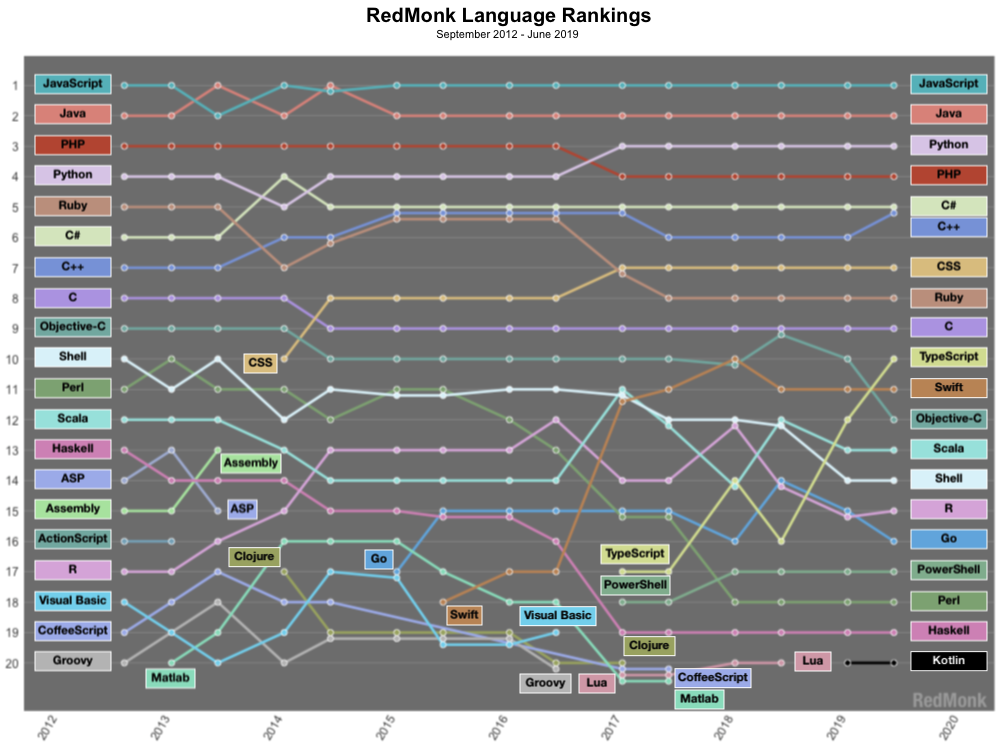Which programming languages have true longevity? That’s not just an academic question; if you’re a working tech professional, you want to know which languages have a good chance of remaining important to the industry over the next decade—or longer.
That’s why RedMonk’s regular breakdowns of programming-language rankings are so important. The analyst firm doesn’t just look at the fortunes of different languages over the past quarter or year—its measurements extend back to September 2012. And its latest rankings update shows that JavaScript, Java, Python, PHP, and C# have remained the industry’s top stalwarts during that period, never wavering, even as new-and-exciting languages such as Swift and Kotlin attempt to carve off a piece of the usage pie for themselves.

For data inputs, RedMonk relies on GitHub pull requests and Stack Overflow discussion. “These rankings attempt to correlate trends between language usage and discussion around a language,” reads the firm’s note about its analysis. “We don’t proclaim our rankings to be precise, statistically-valid measurements of popularity; instead we see them as an attempt to aggregate trends across two major communities.” (RedMonk is also refreshingly up-front about changes in its methodology over the years, which it takes into account.)
Programming languages such as Python and JavaScript boast truly massive install bases across multiple platforms, including mobile and the Internet of Things (IoT). That combination of legacy code and current needs means these languages’ top positions are difficult (if not impossible) to degrade. For tech professionals, that’s great news: As long as you learn these languages, and keep current with any updates, you’ll maintain your viability as a programmer. The “buzz” around these languages on developer forums also means that you can find the help you need if you run into a thorny issue.
At the same time, it’s worth keeping an eye on up-and-coming programming languages, many of which are explicitly designed to improve upon their older siblings. As you can see from the chart, Apple’s Swift language has risen at the increasing expense of its predecessor, Objective-C. TypeScript is another creeper, possibly because it’s cannibalized JavaScript’s market-share (if you believe in TIOBE’s theory). It might take some time (years, in fact) for some of these newer languages to gain a substantial user base, but they’ll get there.



